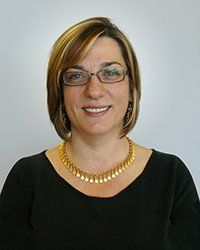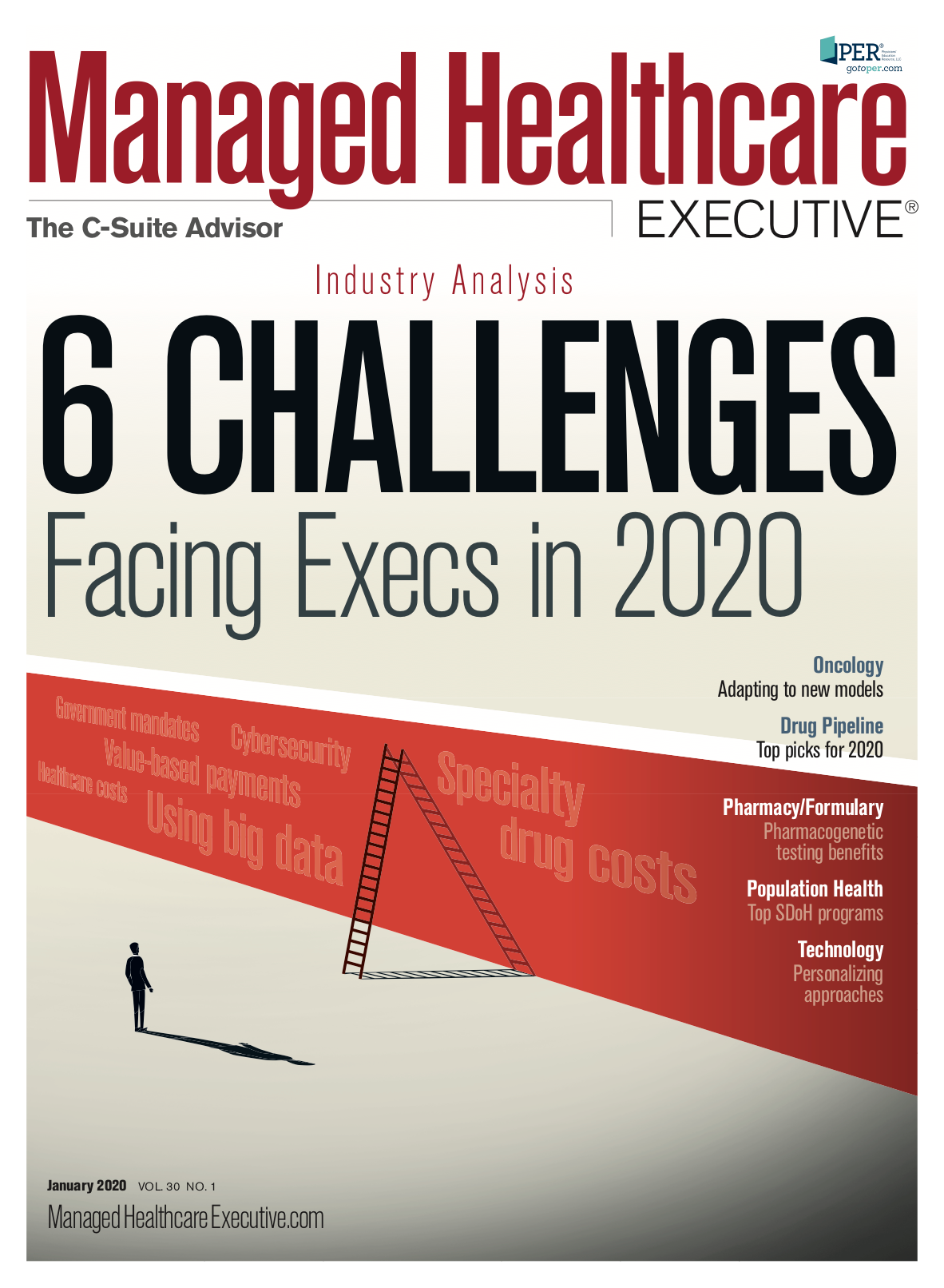Data Analytics Improving Care Coordination Programs
Risk-stratification and electronic triage programs are improving patient care and decreasing costs for health systems.

Sibel Blau

Charles Saunders

After analyzing data about risk of death and emergency department usage for its cancer patients, Northwest Medical Specialties opened a walk-in clinic.
A nurse practitioner staffs the clinic, which is open from 9 a.m. to 5 p.m. on weekdays. The goal is to treat the acute symptoms that cancer patients experience-such as pain, dizziness, and diarrhea-and avoid trips to the emergency department.
The practice-with six locations in the Tacoma, Washington area-plans to hire a second advanced practice provider to staff the acute-care service at a second location.
Before launching the clinic, the practice conducted a six-month pilot, demonstrating sufficient patient demand and satisfaction with the service to justify the cost.
“This was an example of a practice transformation-of how this practice took information and made a dramatic change in the clinic,” says Sibel Blau, MD, medical director, hematology and oncology divisions at the 10-physican practice. The overall goal, she says, is to position the practice for success under value-based reimbursement models.
Northwest Medical Specialties is not alone. As value-based payment arrangements become more common, community cancer providers are installing data-analysis tools to help them figure out how to meet cost and quality targets.
Related: Can Data Analytics Lower Hospital-Acquired Condition Incidence?
Payers and providers are focusing on improving the quality and efficiency of cancer care because of the disease’s prevalence and treatment costs. The American Cancer Society projects that there will be more than 1.7 million new cancer cases and 606,880 cancer deaths in the United States in 2019.
The costs to treat those patients keep rising. The National Institutes of Health estimates that the United States will spend at least $158 billion on cancer care in 2020, a 27% increase over expenditures in 2010.
Because a significant proportion of those patients are Medicare beneficiaries, CMS developed a five-year pilot project, the Oncology Care Model (OCM), which began on July 1, 2016. Nearly 200 physician groups and 17 commercial payers are participating in the program, according to CMS.
CMS reimburses providers based on their performance during six-month episodes of care for chemotherapy treatment using either a one-sided or a two-sided risk model.
West Palm Beach, Florida-based Integra Connect, which develops information technology solutions for healthcare providers, has tracked the performance of its customers involved in the OCM program, which totals about 16 practices and 1,000 oncologists. “What we see is a steady improvement,” says Charles Saunders, MD, CEO, Integra Connect. With each successive performance period, more of the practices have kept their actual costs of care under the target cost set by CMS, he says.
Nonetheless, Saunders says some of his clients did not earn a bonus payment during any of four performance periods, ending with the first half of 2018. Those practices would have decided by December 2019 whether to accept two-sided risk, or drop out of the program.
In cancer care, the largest buckets of costs are chemotherapy and other medications; facility services, such as hospitals and skilled nursing facilities; and care at the end of life, says Saunders, who regularly writes and speaks about value-based cancer treatment.
CMS isn’t the only payer applying value-based care models to cancer treatment. In April, Humana announced its value-based program for oncology in which it will reward oncology practices for exceeding quality and cost benchmarks over a one-year period.
Like Northwest Medical Specialties, Texas Oncology-a large cancer treatment and research provider in Texas specializing in hematology, pediatric and radiation oncology, which also participates in CMS’ OCM-has worked to decrease rates of hospital admissions and emergency department visits.
For example, the oncology practice analyzed data on telephone calls and response times for patients reporting acute medical issues. What Texas Oncology learned was that when patients called, they usually left a voicemail but often for the wrong department. The inefficient approach made it difficult for staff to return calls quickly.
Call back times are “a huge barrier,” says Lalan Wilfong, MD, executive vice president of value-based care and quality programs, Texas Oncology. If patients don’t receive a timely return call, they go the emergency department for help, he says.
To solve the problem, Texas Oncology, with more than 460 physicians and 210 locations, is in the midst of implementing an electronic triage platform from Navigating Care.
This is how the new process works: When a patient calls, a locally based operator working with an electronic dashboard determines which department should respond to the call. If it is a nursing issue, the operator asks targeted questions to triage the patient. “Somebody who calls in with a fever of 102 [degrees] is a higher risk than somebody who calls in because his or her toe hurts,” Wilfong says.
When dedicated triage nurses return calls, they also have access to the pre-screened patient information on an electronic dashboard, Wilfong says. Because the tool is electronic, nursing managers monitor the dashboards, and assign additional staff to return calls on unusually busy days, he adds.
The objectives of the electronic triage program are straight-forward: A “live person” answers the calls. When the call involves an acute medical issue, triage nurses call the patient back within 30 minutes, Wilfong says.
In addition to improving acute symptom management, oncology practices nationally are also using data analytics to improve their care coordination programs.
Northwest Medical Specialties uses a machine learning–enabled tool from Jvion to risk stratify patients. The tool produces lists of patients at risk of clinical deterioration on seven vectors, including 30-day mortality and avoidable hospital admissions. The tool also details the clinical and non-clinical factors driving the risk and recommended actions to mitigate the risk.
By feeding data from its electronic health record into the tool, Northwest Medical Specialties gets a daily list of patients who score high on at least five of the seven vectors. A care coordinator works with those patients to schedule the appropriate services, such as evaluation and treatment for pain, distress, or depression; completing advance directives; or referral to hospice care.
By risk stratifying patients and acting on the information, Northwest Medical Specialties has increased referrals for palliative and hospice care by 81%, depression screenings by 68%, and case management evaluations by 80%.
In addition to heading off adverse events before they occur, it’s also important to quickly find out when patients visit an emergency department or are admitted to a hospital or skilled nursing facility.
To gain reliable access to that type of information, Regional Cancer Care Associates recently implemented software from PatientPing, which electronically notifies the 34-location cancer provider when one of its patients receives care outside of its facilities in New Jersey, Maryland, and Connecticut.
Using the software, staff at Regional Cancer Care Associates can also drill down to find out “the working diagnosis” for each of its patients, says Lani Alison, vice president, clinical affairs, Regional Cancer Care Associates.
The tool also allows Alison to look for opportunities to improve performance by analyzing aggregated data, such as how often a patient has been admitted to a hospital or how many of a doctor’s patients have been hospitalized.
Before implementing PatientPing, gaining access to such timely data was haphazard, manually driven, and didn’t lend itself to data analytics. As Alison says, “It was clunky.”
Linda Wilson is an experienced writer and editor specializing in the healthcare industry.

In the Scope of Virtual Health and the Future of “Website” Manner, Per Ateev Mehrotra
August 10th 2023Briana Contreras, an editor of Managed Healthcare Executive, had the pleasure of catching up with MHE Editorial Advisory Board Member, Ateev Mehrotra, MD, MPH, who is a professor of healthcare policy at Harvard Medical School and an Associate Professor of Medicine and Hospitalist at Beth Israel Deaconess Medical Center.
Listen